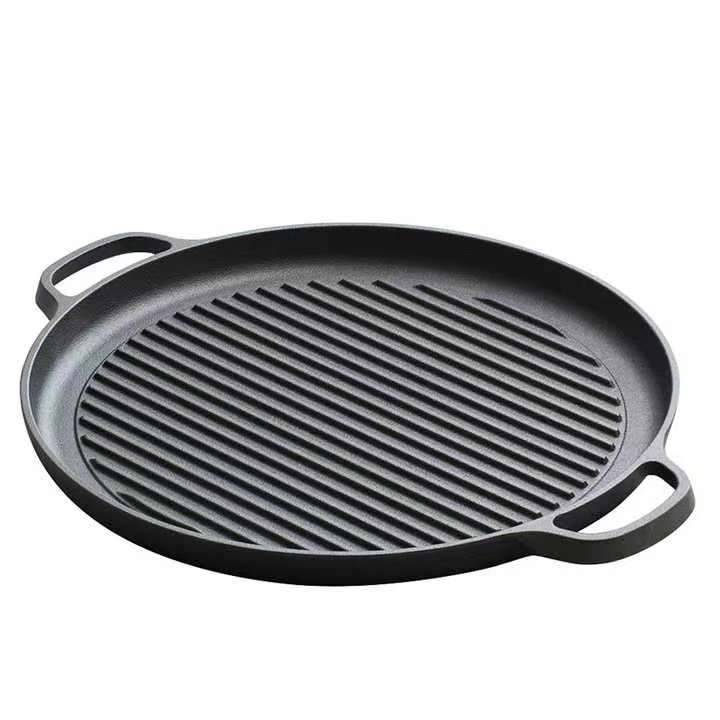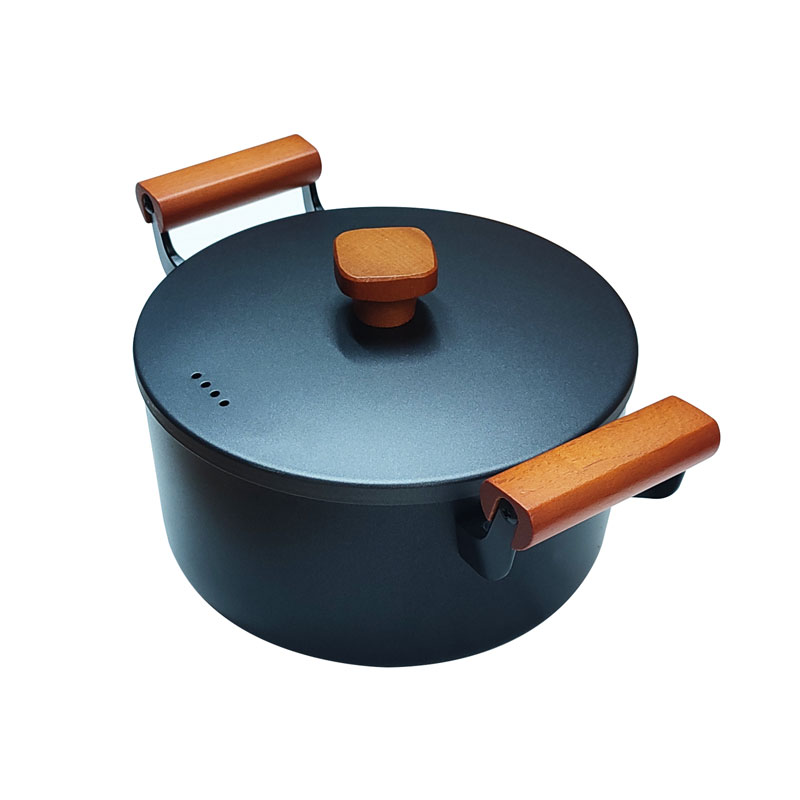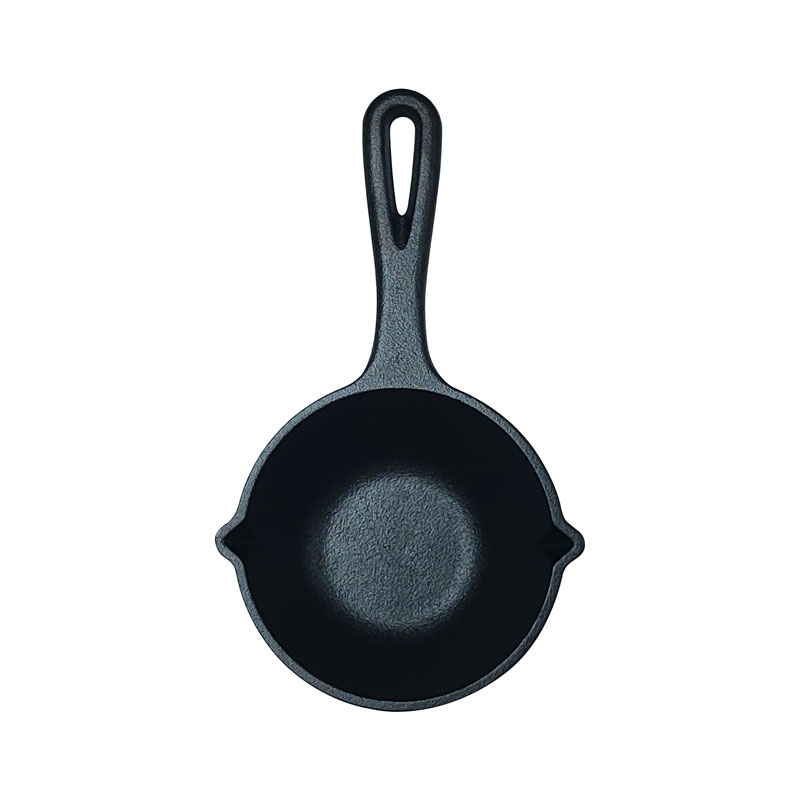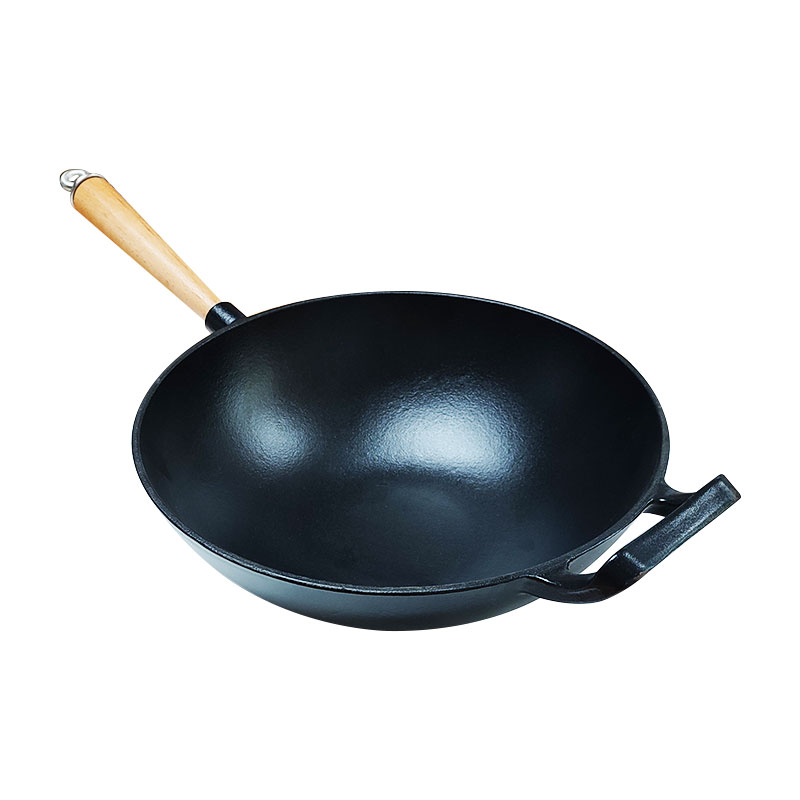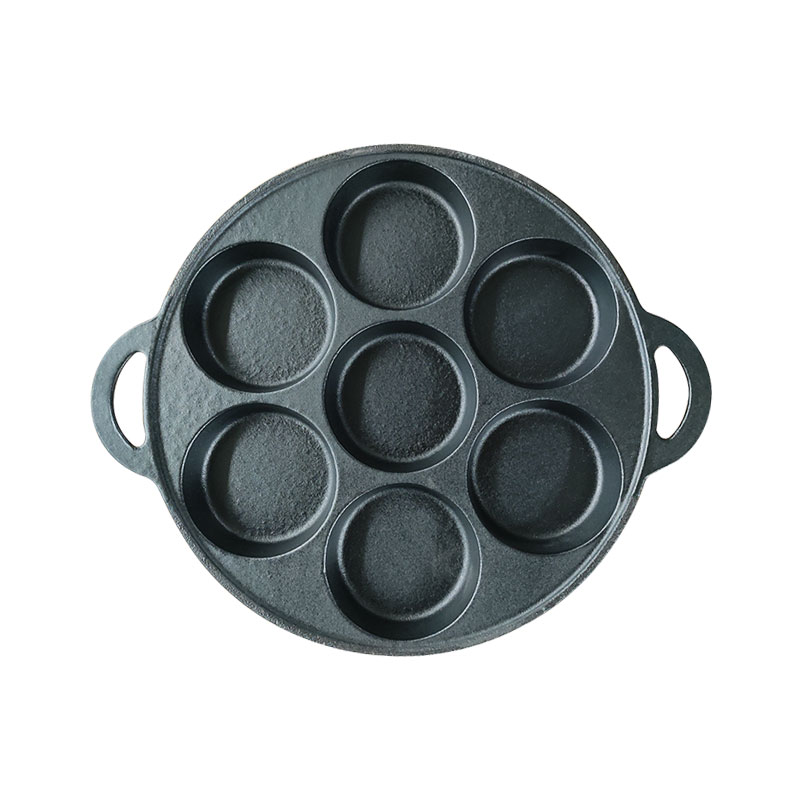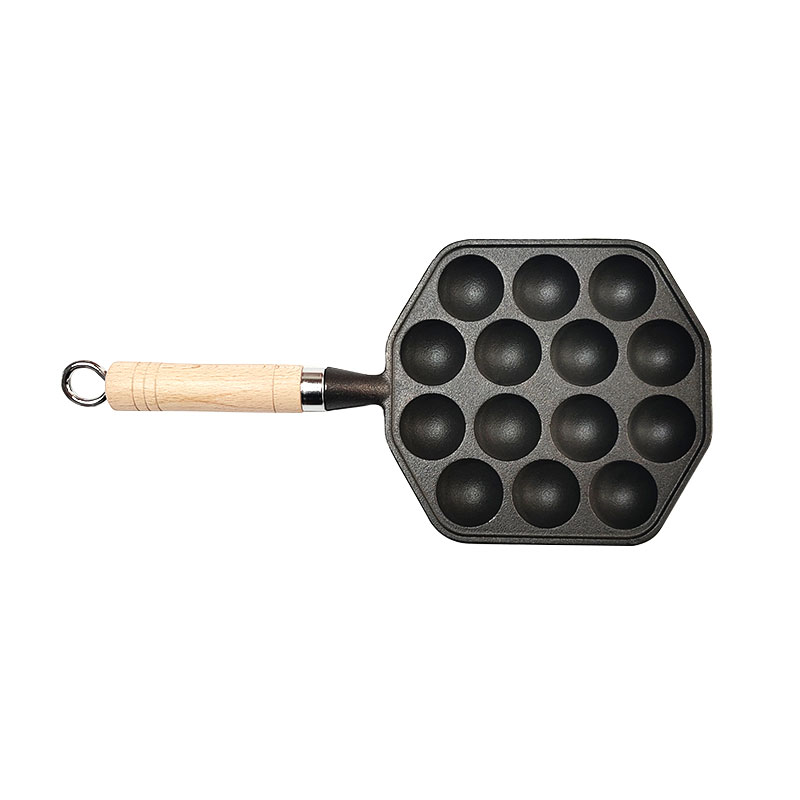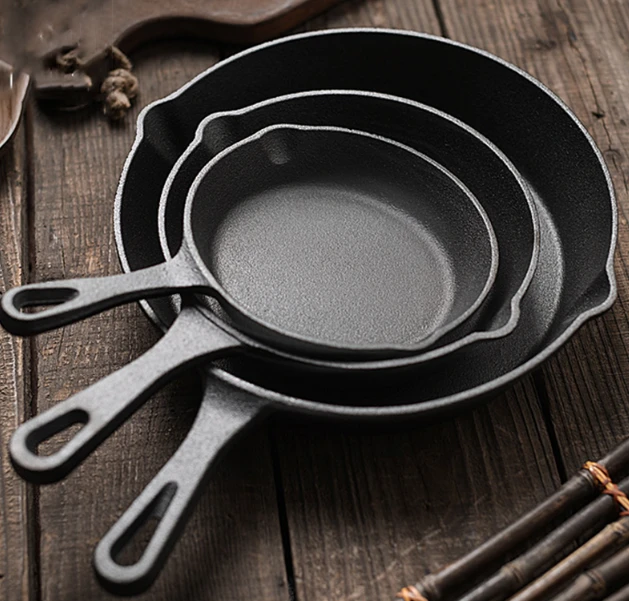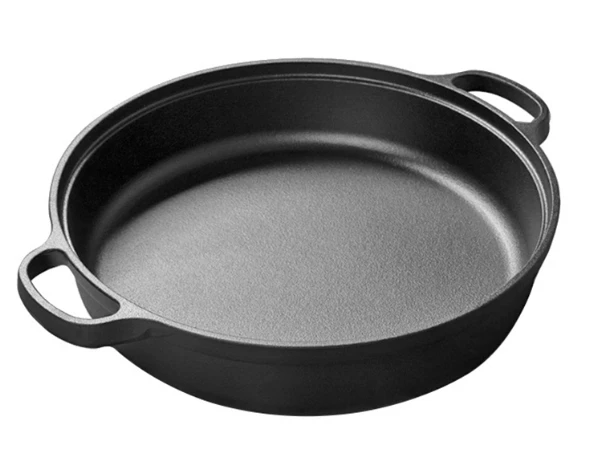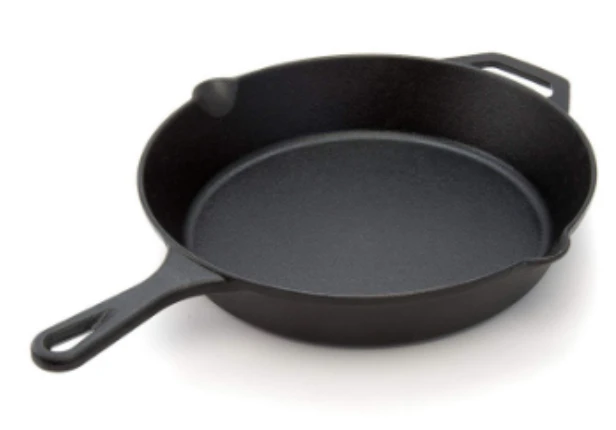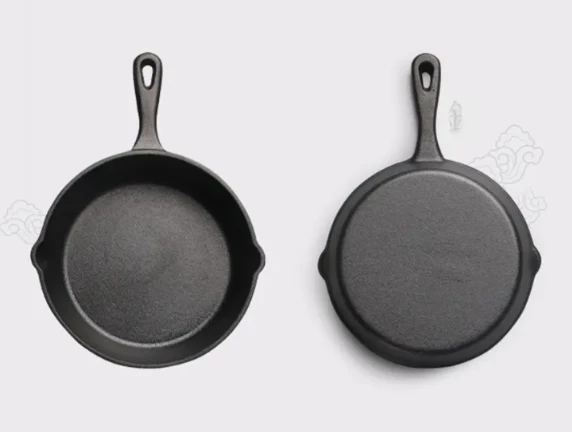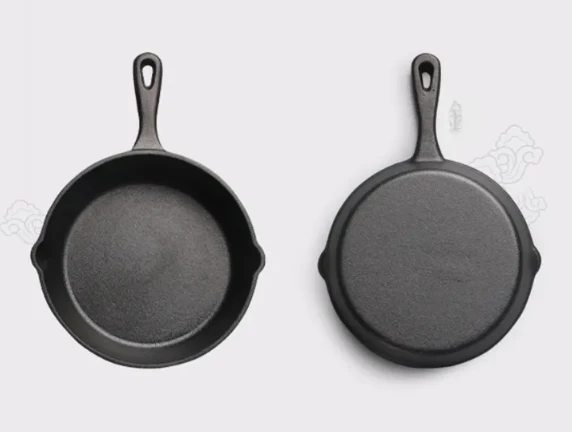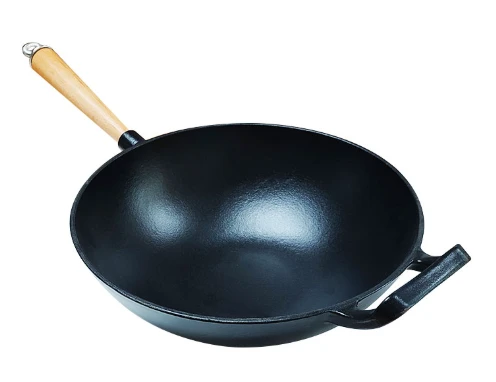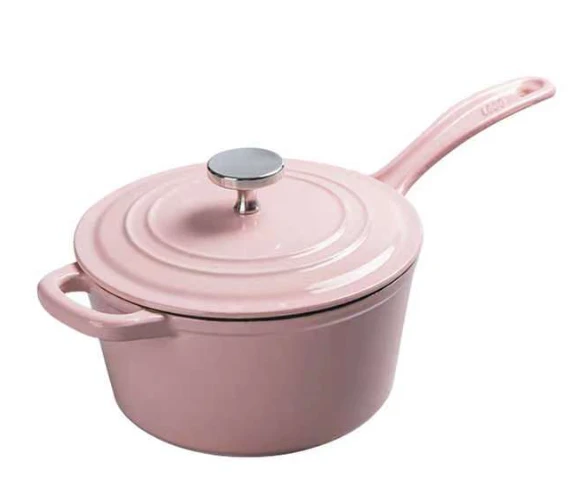1.Non-stick Coating Cooking Surface, More healthy without harm to human body, Environmental protection and safety
2.Cast-iron pans are characterized by non-stick pans after boiling,and the longer they are used, the more non-stick they become
3.General Use for Gas, Induction Cooker and open fire and so on, Easy to use
4.Thicken the bottom of the pan, super lock the temperature, evenly heated
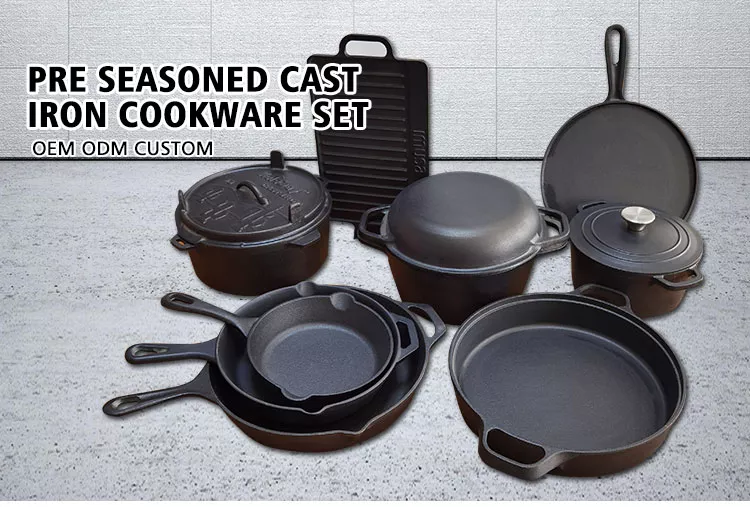
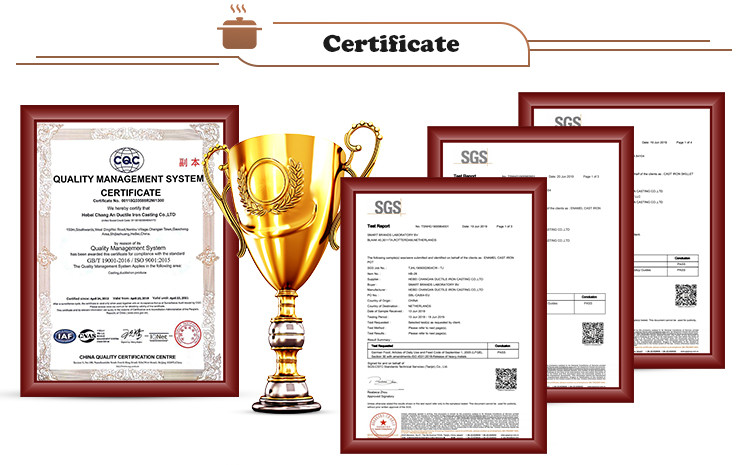
Why Cast Iron Is the Ideal Material for Mini Cookware
Cast iron’s superior heat retention and even heating make it perfect for mini cookware. Unlike thin metals that develop hot spots, cast iron distributes heat uniformly, ensuring consistent cooking whether you're simmering sauces or searing meats. Its dense structure retains heat exceptionally well, keeping food warm long after removing it from the stove—ideal for small-batch cooking. Additionally, cast iron is virtually indestructible, resisting warping and scratches that plague cheaper materials. From mini skillets to tiny Dutch ovens, these compact pieces deliver professional performance while lasting a lifetime.
Enameled vs. Pre-Seasoned Cast Iron Mini Pots: What’s the Difference?
Enameled cast iron features a glass-like coating that prevents rust and eliminates the need for seasoning, making it low-maintenance and ideal for acidic foods like tomato sauce. Pre-seasoned cast iron comes with a polymerized oil layer that improves over time but requires occasional re-seasoning to maintain its non-stick properties. Enameled pots offer vibrant colors and easy cleaning, while traditional seasoned cast iron develops a richer patina with use. Choose enameled for convenience or pre-seasoned for those who enjoy the ritual of cast iron care.
The Heat Retention Power of Cast Iron Mini Pots
One of cast iron’s standout qualities is its ability to hold heat steadily, even in small pots. This means food cooks evenly without sudden temperature fluctuations—perfect for delicate tasks like melting chocolate or simmering custards. Once heated, a mini cast iron pot stays warm longer than stainless steel or aluminum, making it great for serving dips or keeping sauces at the ideal temperature. Whether used on the stovetop, in the oven, or over a campfire, its thermal mass ensures consistent results every time.
Why a Bread Pot With Lid Is Essential for Artisan-Style Homemade Bread
A lidded bread pot (like a Dutch oven or dedicated bread cloche) is the secret weapon for achieving bakery-quality loaves at home. Its enclosed design replicates professional steam-injected ovens, creating the ideal humid microclimate for optimal oven spring—that dramatic initial rise that gives sourdough its lofty height. The cast iron or ceramic construction absorbs and radiates heat evenly, preventing hot spots that cause lopsided baking. Unlike open baking sheets, the lid traps evaporating moisture from the dough, which gelatinizes the surface starch to form that coveted crispy, blistered crust. For home bakers chasing taverna-style ciabatta or crackly baguettes, this tool bridges the gap between amateur attempts and artisanal results.
How the Lid Creates Steam for Perfect Crust in a Bread Baking Pot
Steam is the make-or-break factor in crust development, and a lidded pot engineers it effortlessly. As the dough heats, water vapor rises and condenses on the cooler lid, creating a self-basting steam chamber. This moisture delays crust formation, allowing the loaf to expand fully before hardening—key for open crumb structures in sourdough or rye. The lid also reflects heat downward, ensuring the base browns evenly without scorching. When removed mid-bake (typically after 20 minutes), the sudden drop in humidity shock-sets the crust, locking in glossy caramelization. Compare this to manual steam methods (spritzing ovens or ice cubes), which are inconsistent and risk temperature fluctuations. With a lidded pot, perfect crust is guaranteed, not guessed.
Dutch Oven vs Bread Pot – Which Is Better for Baking the Perfect Loaf?
While both tools share steam-trapping benefits, their design nuances cater to different priorities. A Dutch oven (like Le Creuset) offers multipurpose versatility—its broad base suits round boules or stews, but taller sides can limit ear development on batards. A dedicated bread pot (such as the Challenger Bread Pan or Emile Henry cloche) optimizes bread-specific geometry: shallow, flared walls promote consistent browning, and lighter ceramic versions reduce preheating time. Dutch ovens excel in high-hydration doughs (e.g., 80%+ hydration sourdough) due to superior heat retention, while ceramic bread pots provide gentler, more even heat for delicate pastries. Choose based on your baking style: multitaskers favor Dutch ovens; purists invest in specialized bread pots.






















